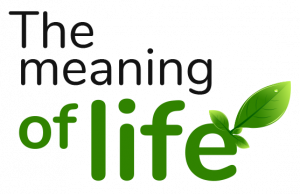Low Blood Sugar Dαngєr: Once You Notice These Signs In Your Body, Go For A Test Immediately

Low blood sugar, also called hypoglycemia or “hypo”, occurs when the sugar (glucose) level in your blood is too low.
Hypoglycemia is often related to diabetes treatment. But other medications and various conditions can increase your risk of hypoglycemia.
Causes of low blood sugar
There are many reasons why you may experience hypoglycemia, including:
- Taking too much insulin.
- Not eating enough carbohydrates for the amount of insulin you are taking.
- When you take your insulin.
- The amount and timing of physical activity.
- How much alcohol you drink.
- The amount of fat, protein and fiber in your meal.
- Hot, humid weather.
- Unexpected changes in your schedule.
- Spending time at high altitudes.
- Going through puberty.
- Menstruation.
Low blood sugar triggers the release of epinephrine, the “fight or flight” hormone. Epinephrine can cause symptoms of low blood sugar such as heartbeat, sweating, tingling and anxiety.
If blood sugar levels continue to drop, the brain stops getting enough glucose and stops working as intended. This can lead to blurred vision, difficulty concentrating, fuzzy thinking, slurred speech, numbness and drowsiness. If blood sugar levels stay low for too long, starving the brain of glucose, it can lead to seizures, coma and very rarely dєαth.
If you notice these signs and symptoms in your body, get tested.
Your reaction to low blood sugar may be different from someone else with low blood sugar. It is important to know your signs. Common symptoms may include:
1. Symptoms of mild hypoglycemia.
You may experience these symptoms when your blood sugar is less than 70 milligrams per deciliter.
Some young children with diabetes can’t recognize the symptoms of hypoglycemia. To avoid disaster, parents should test a child’s blood sugar as soon as they suspect hypoglycemia, such as:
– Sweating.
– Trembling.
– Weakness.
– Extreme hunger.
– Mild nausea.
-Dizziness and headaches.
– Blurred vision.
– A fast heart rate and a feeling of anxiety.
These symptoms may go away soon after eating foods containing sugar.
2. Symptoms of moderate hypoglycemia.
When blood sugar levels persistently drop below 40 mg/dL, your behavior may change. Symptoms that may occur include:
– Difficulty concentrating.
– Confusion and irritability.
– Slurred speech.
– Instability when standing or walking.
– Muscle twitching.
3. Symptoms of severe hypoglycemia.
Symptoms of severe hypoglycemia, which is when the blood sugar level is less than 20 mg/dL, include the following:
– Seizure.
– Loss of consciousness.
– Stroke.
– If not treated promptly, it can lead to death.
4. Symptoms of Nocturnal hypoglycemia.
If your blood sugar drops while you sleep, your partner or other family members may notice that you sweat a lot and act differently. Signs of nocturnal hypoglycemia include:
– Restlessness.
– Making unusual noises.
– Trying to get out of bed or accidentally rolling out of bed.
– Sleepwalking.
– Nightmares.
You may also wake up with a headache the next day if your blood sugar was low during the night.
In conclusion, the safest way to find out if you have low blood sugar is to see your doctor to check your blood sugar. If you have symptoms and are unable to check your blood sugar for any reason, treat the hypoglycemia.

















